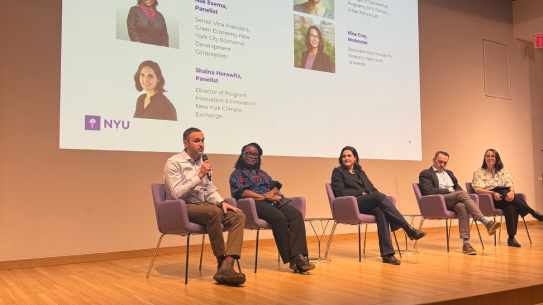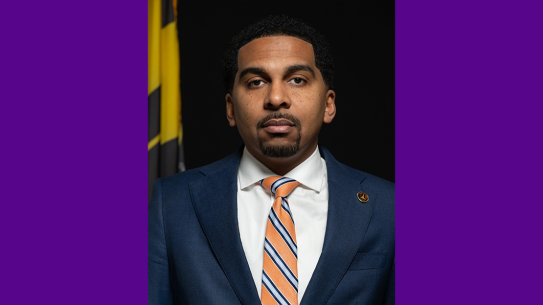Roy Maimon, one of Tandon’s newest faculty members, is tackling neurodegenerative disease in new ways

According to the U.N., virtually every country in the world is experiencing growth in the number and proportion of older people, and by 2080, the global population aged 65 and older is projected to reach 2.2 billion, surpassing the number of children under age 18. Within that aging population, neurodegenerative diseases — chronic conditions that damage portions of the nervous system, particularly the brain — are on the rise, making it imperative to find innovative methods of halting or reversing disease progression.
The newest member of Tandon’s Department of Biomedical Engineering is devoted to that mission.
Roy Maimon
Assistant Professor of Biomedical Engineering
By the time neurodegenerative diseases like Huntington's Disease (HD) and Amyotrophic Lateral Sclerosis (ALS) are diagnosed in a patient, up to 80 percent of their neurons may be affected. That’s an especially grievous problem, since neurons — the fundamental cells in the brain and nervous system — do not naturally regenerate the way other cells do.
That figure troubled Roy Maimon, who had first become interested in the topic as a 20-year-old, after meeting someone suffering from a neurodegenerative disease. “I was struck by the lack of options and sense of hopelessness he described,” Maimon recalled. “I had originally thought that I would major in civil engineering, but that encounter changed my mind.”
After earning his undergraduate degree in neuroscience from Bar-Ilan University in 2014, Maimon entered Tel Aviv University. There, in Professor Eran Perlson’s multidisciplinary molecular and cellular neurobiology lab, he demonstrated that muscles affected by ALS secrete toxins that speed the degeneration of a patient’s motor neurons — a major step in understanding the mechanisms that allow the disease to develop.
Although most treatments focused on preserving as-yet-unaffected cells, Maimon wondered if there was something more that could be done, and as a postdoctoral researcher at the University of California, San Diego, working with Professor Don Cleveland, he turned his attention to exploring ways to stimulate the brain to create new neurons. Inducing brain regeneration.
The recipient of the inaugural awards from the Hereditary Disease Foundation (HDF), Huntington’s Disease Society of America (HDSA), and Dan Lewis Foundation, as well as the prestigious K99/R00 from the NIA, Maimon has developed an antisense oligonucleotide (ASO) potential therapy targeting the RNA-binding protein Polypyrimidine tract binding protein 1 (PTBP1). His work demonstrates that suppressing PTBP1 can reactivate dormant neural stem cells in the aging brain, converting them into functional neurons. Remarkably, a single injection of the DNA-based drug was sufficient to initiate this regenerative process.
Recently, he has been combining traditional single-nucleus sequencing and immunofluorescence with an advanced spatial transcriptomics technique — Multiplexed Error-Robust Fluorescence In Situ Hybridization (MERFISH) — to identify, trace, and manipulate neural stem cell-derived neurons. His goal is to uncover strategies to modulate and engineer neural stem cells efficiently and safely, paving the way for transformative therapies for neurodegenerative diseases such as Huntington’s Disease and ALS.
“More than a century ago, Santiago Ramón y Cajal, one of the founding fathers of modern neuroscience, called the nerve paths ‘fixed and immutable’ and asserted, ‘Everything may die, nothing may be regenerated,’” Maimon says. “He challenged future generations of neuroscientists to prove him wrong. Cajal challenge accepted!”
With groundbreaking projects and prospects combining neurobiology and engineering ahead, Maimon is looking forward to joining Tandon’s Department of Biomedical Engineering and collaborating with colleagues like Irene de Lazaro, who is researching ways to regenerate damaged cardiac cells; David Truong, who is working at the intersection of synthetic biology, genome engineering, and regenerative immunology; and Jeffrey Hubbell, who leads NYU’s Initiative to Advance Engineering and Health. “I’m excited to collaborate with them and other colleagues from across the university and to play a part in educating the next generation of engineers, some of whom could make it their own mission to address Cajal’s challenge,” he says. “I’m also eager to call New York City home. I can’t think of a more dynamic place to live and work.”




